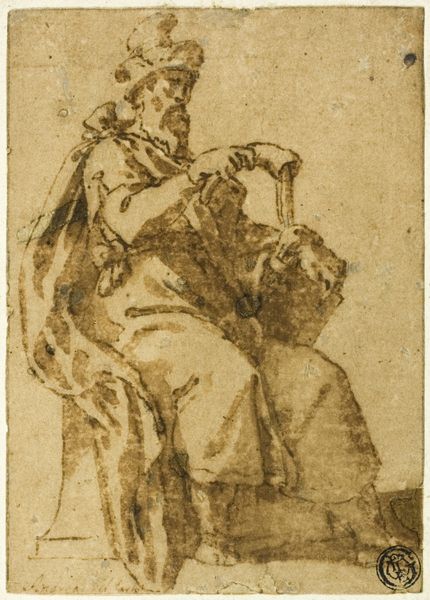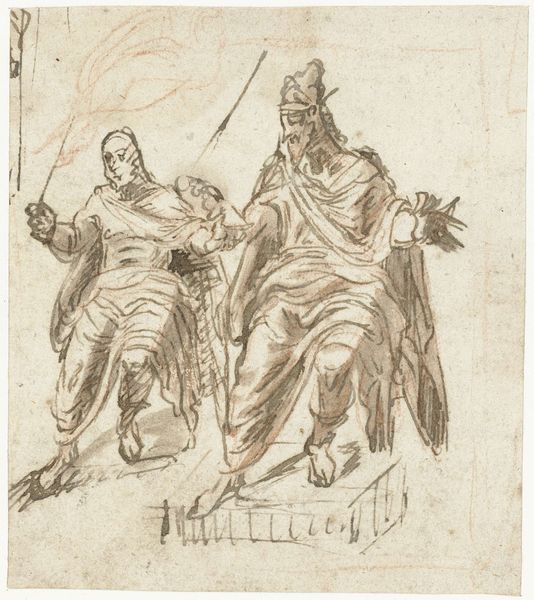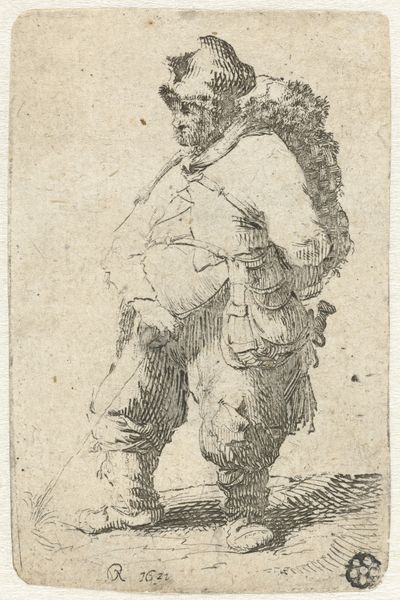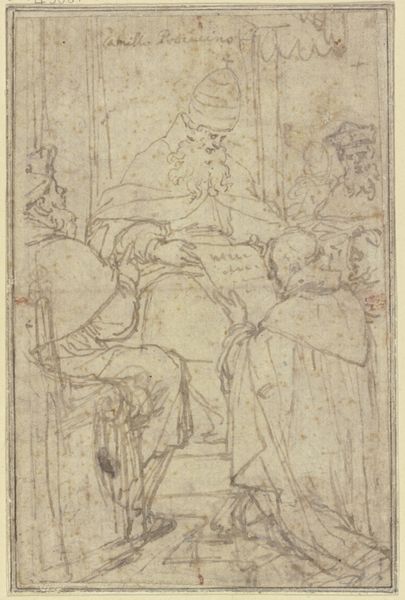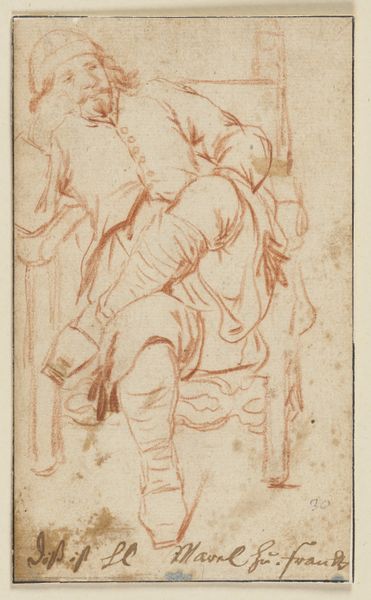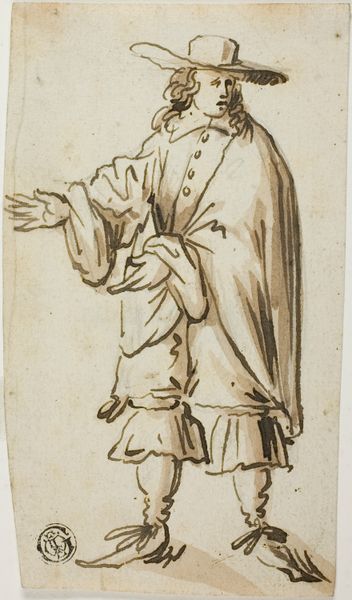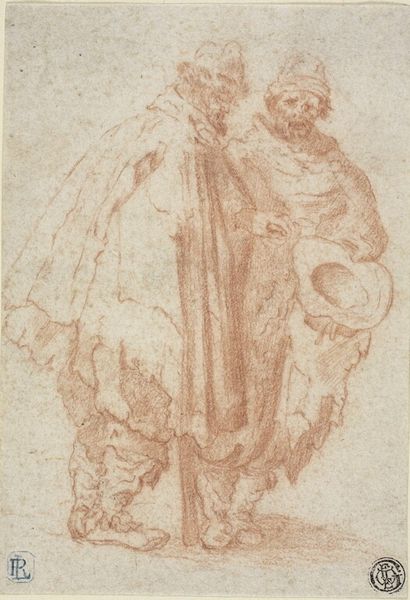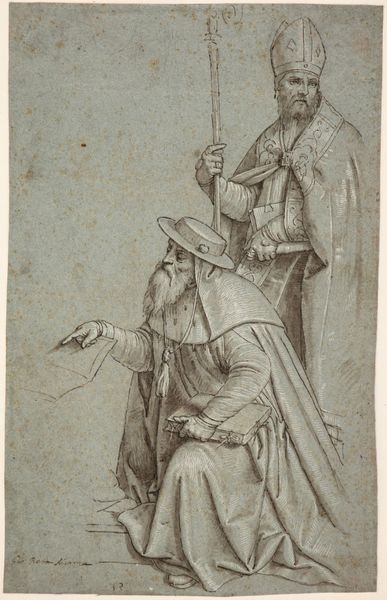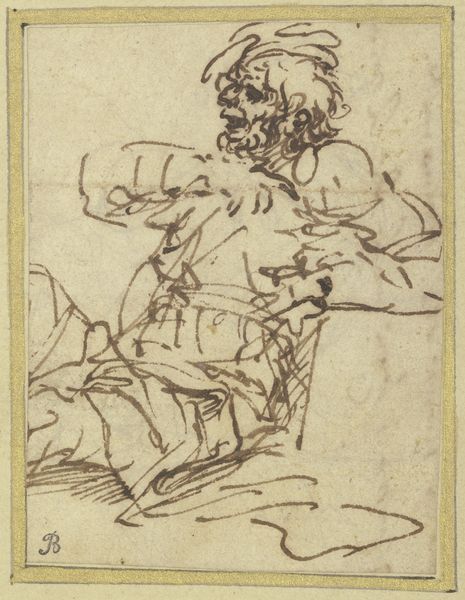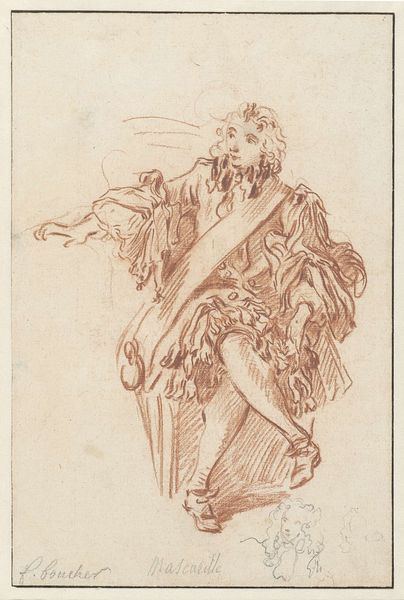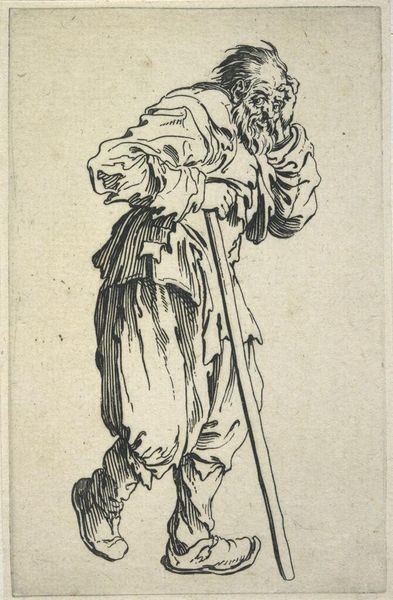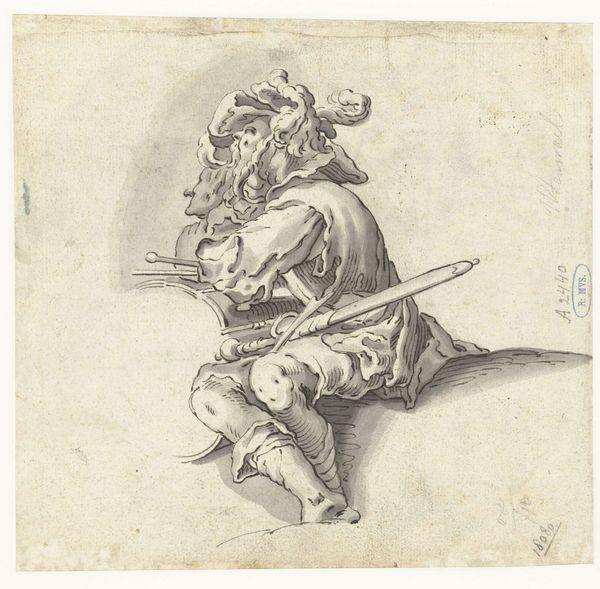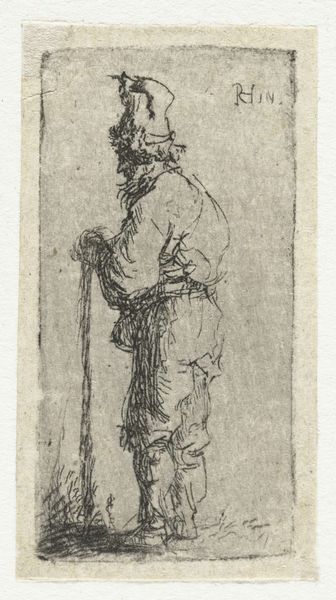
drawing, ink
#
portrait
#
drawing
#
pencil sketch
#
mannerism
#
figuration
#
ink
Dimensions: height 79 mm, width 63 mm
Copyright: Rijks Museum: Open Domain
Curator: Let's discuss Lambert Lombard's "Study of a Seated Ruler," a drawing in ink dating from between 1516 and 1566. It currently resides in the Rijksmuseum. Editor: Well, first impressions? The quick strokes convey a sense of immediacy and power. It looks like he’s gripping a scepter, doesn't it? Though the whole image is a bit rough. I am really interested in what kind of paper was he working on here? Curator: Indeed! That roughness is key. It points to Mannerism, moving away from the High Renaissance's idealization towards something more expressive. These sketches circulated widely, shaping the visual language for representing authority. Editor: I'm also drawn to his robes; look at how they’re described. Not meticulously rendered, but enough to understand volume and texture. I would also be interested to examine Lombard's source material. Is it Roman Emperors perhaps, recast through the lens of 16th century artistic labor? Curator: The attire does evoke Roman imagery, tying the ruler to a classical heritage. But, more significantly, consider Lombard’s role as court painter and art advisor. This sketch represents a concept for political representation. It really shows you what that imagery represented for those times! Editor: Absolutely. And knowing it’s a sketch gives us access to Lombard's working method; not a polished statement but a raw step in constructing the idea of rulership. The ink itself matters. Was it local or imported? Was ink easily available to other aspiring artists? Curator: Excellent point. The drawing functions not just as an image, but as evidence of an artistic and political process. These drawings served as models and promoted artistic agendas for Lombard. Editor: So, it shows not just the *what* of representation, but the *how* as well! Looking at these ink lines helps you think through the work it takes to present the image of someone as a Ruler. It has so many political implications and so many other ideas behind. Curator: It seems like understanding the power of the era involves us understanding the methods behind Lombard's practice of visualizing it through drawings. Editor: Definitely, there’s power both on the page, but even greater power coming out of it as well!
Comments
No comments
Be the first to comment and join the conversation on the ultimate creative platform.
